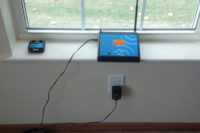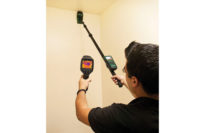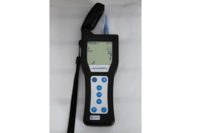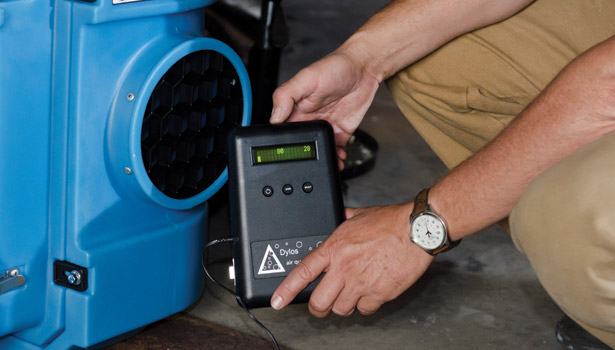Innovation in Restoration: From ATP Meters to IR Cameras
Better and increased use of meters and data loggers can be very helpful in communication.














Necessity is the mother of invention” is a well-known proverb, but we can get closer to the core of its meaning by saying, “Necessity is the reason for change.” When we need to change, we search out an existing product or process or invent a new one. (You can always ignore change and let your competition pass you if you wish, but I don’t recommend that.) That is what I look for when I evaluate products for the restoration industry. The over-arching questions are, “What problem does this solve?” and, “Does it make the job easier, faster or better?” Other important questions are, “How will it translate to dollars?” as well as, “Will it give me a marketing edge?” and “Will it help me to communicate better and therefore get paid better or faster?” I think the latter of the questions is the most important.
Most problems in life are communication issues. This includes our communication with employees, employers, contractors, agents, adjusters and property owners. Good documentation is pounded into our heads in every class we attend, but what does that mean? Documentation is our communication, but for it to be the best communication, it must include justification and verification. It is all about trust. How can the adjuster trust you if you don’t communicate what you did, justify why you did it and verify your actions?
Better and increased use of meters and data loggers can be very helpful in this process. Use meters and data logging to verify existing conditions at the start of a project and to verify improved conditions at the end. This justifies the actions you take, enabling customers to easily see the improvements and adjusters to rapidly assess and process submitted claims. It’s an easy and powerful way to gain the trust of those you are serving.
Verification and justification are the issues that restoration professionals need to solve, and the products, services and concepts to solve them are emerging in our industry. I’d like to highlight four.
Remote Monitoring
This is an option that is improving and should be considered by all restoration professionals. Inexpensive data loggers and more sophisticated systems can provide psychrometric readings, as well as moisture content and surface temperatures without you being on site. What can these do for your company? They chronicle job progress and provide documentation charts. (Third-party verification and the readings can’t be altered - remember, “trust.”)
Remote monitoring systems should alert you to possible problems. You should be able to program alert criteria based on air temperature, humidity, moisture content, surface temperature or power interruptions. You access the information by computer or phone, checking job progress to determine the priority for on-site visits. Remote monitoring will not completely replace daily visits because you need to check other areas of the rooms without sensors and adjust equipment, but it can certainly make managing jobs easier. Newer systems will also be able to turn equipment on or off based on sensor readings or remote input by the restoration pro.
You really want to gain trust? Here is a suggestion: when the sensor shows a piece of equipment is no longer needed, turn it off remotely and stop charging for it. It may cost a few dollars today, but the gain of trust may get you paid quicker or may get you more jobs in the future.
Particle Counters
You verify a dehumidifier’s performance with a thermo-hygrometer, but how do you verify the performance of an air scrubber? I hear of contractors getting pushback on these quite a bit. Why? Well, put yourself in the adjuster’s shoes. You say you need an air scrubber and that it is helping the project by removing particulates from the air, but how do you know? How does the adjuster know? The reason most restoration pros have avoided using particle counters is the cost, which can be upwards of $3,000. However, there are more affordable units available now and, as a bonus, these economical units have data logging and charting ability to boost your documentation. There’s no longer a good reason not to own a particle counter to verify your equipment is working properly and to justify its use when you determine it is needed.
ATP Meters or Luminometers
These are not new. Other industries have used them for years, and some professionals have adopted it for use in restoration. I believe we will continue to see much progress and increased utilization. ATP meters basically measure the amount of biological contamination on a surface or in a liquid. The meter doesn’t tell you what is there, but it gives you an indication of the cleanliness/contamination.
There are vague definitions of water damage categories in the IICRC S500. They have to do with the “range of contamination,” but how do we really know? Because there hasn’t been a practical field test available, we have to classify our jobs using a “worst case scenario.” Here’s an example: Under the definition of Category 3, you find “sewage” (no one would probably argue that), but you also find “ground surface water.” I’m pretty sure not all ground surface water has the same “pathogenic, toxigenic or other harmful agents” as sewage. That statement should raise a red flag. But how do I know without some kind of test? I don’t, so I have to assume the worst. ATP is being researched as a field test that may be used to determine categories or a pre-test for clearance testing before an IEP is called. More research is coming, but you can show initial readings to justify your processes and verify progress on your cleaning efforts with affordable ATP testing now.
Infrared (IR) Cameras
Again, this technology is not new, but the features and benefits continue to increase and the prices continue to decrease – making them affordable to have for each crew in the field. These are great survey tools to scan large areas quickly to identify specific zones of concern. But even IR cameras need to be verified by your moisture meters. A good IR picture can easily show affected areas and verify if your equipment is positioned correctly to be most effective. It’s an overused idiom, but “a picture can be worth a thousand words.” It’s all about communication.
These tools also help your clients understand what you did and why you did it by providing good documentation that communicates, justifies and verifies.
Looking for a reprint of this article?
From high-res PDFs to custom plaques, order your copy today!












